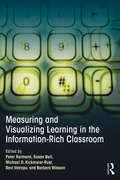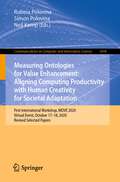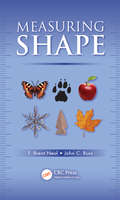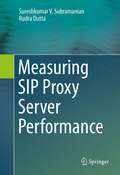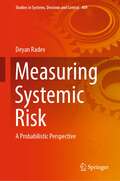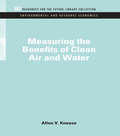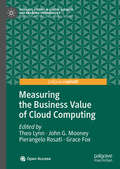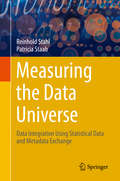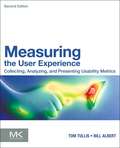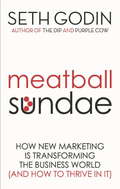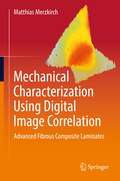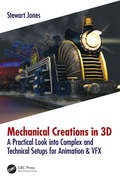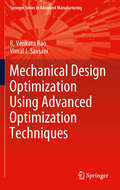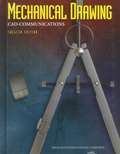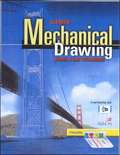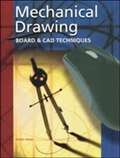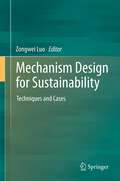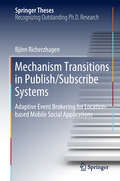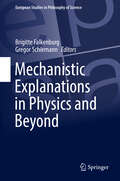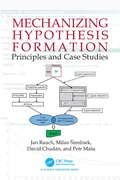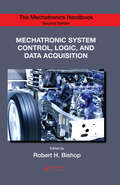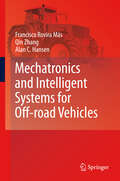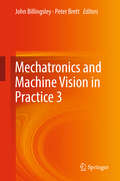- Table View
- List View
Measuring and Visualizing Learning in the Information-Rich Classroom
by Peter Reimann Barbara Wasson Michael Kickmeier-Rust Ravi Vatrapu Susan BullIntegrated information systems are increasingly used in schools, and the advent of the technology-rich classroom requires a new degree of ongoing classroom assessment. Able to track web searches, resources used, task completion time, and a variety of other classroom behaviors, technology-rich classrooms offer a wealth of potential information about teaching and learning. This information can be used to track student progress in languages, STEM, and in 21st Century skills, for instance. However, despite these changes, there has been little change in the kind of data made available to teachers, administrators, students, and parents. Measuring and Visualizing Learning in the Information-Rich Classroom collects research on the implementation of classroom assessment techniques in technology-enhanced learning environments. Building on research conducted by a multinational and multidisciplinary team of learning technology experts, and specialists from around the globe, this book addresses these discrepancies. With contributions from major researchers in education technology, testing and assessment, and education psychology, this book contributes to a holistic approach for building the information infrastructure of the 21st Century school.
Measuring Ontologies for Value Enhancement: First International Workshop, MOVE 2020, Virtual Event, October 17–18, 2020, Revised Selected Papers (Communications in Computer and Information Science #1694)
by Rubina Polovina Simon Polovina Neil KempThis book constitures selected and revised papers presented at the First International Workshop on Measuring Ontologies for Value Enhancement, MOVE 2020, held as Virtual Event in October 2020. The 7 extended and revised papers presented were thoroughly reviewed and selected from the 13 submissions. Along with them, the volume presents 5 invited papers. The volume articles are arranged in the topical sections on complexity of knowledge-intensive endeavors; ontology modeling; enterprise ontologies; knowledge discovery and innovations.
Measuring Shape
by F. Brent Neal John C. Russ"John Russ is the master of explaining how image processing gets applied to real-world situations. With Brent Neal, he’s done it again in Measuring Shape, this time explaining an expanded toolbox of techniques that includes useful, state-of-the-art methods that can be applied to the broad problem of understanding, characterizing, and measuring shape. He has a gift for finding the kernel of a particular algorithm, explaining it in simple terms, then giving concrete examples that are easily understood. His perspective comes from solving real-world problems and separating out what works in practice from what is just an abstract curiosity." —Tom Malzbender, Hewlett-Packard Laboratories, Palo Alto, California, USA Useful for those working in fields including industrial quality control, research, and security applications, Measuring Shape is a handbook for the practical application of shape measurement. Covering a wide range of shape measurements likely to be encountered in the literature and in software packages, this book presents an intentionally diverse set of examples that illustrate and enable readers to compare methods used for measurement and quantitative description of 2D and 3D shapes. It stands apart through its focus on examples and applications, which help readers quickly grasp the usefulness of presented techniques without having to approach them through the underlying mathematics. An elusive concept, shape is a principal governing factor in determining the behavior of objects and structures. Essential to recognizing and classifying objects, it is the central link in manmade and natural processes. Shape dictates everything from the stiffness of a construction beam, to the ability of a leaf to catch water, to the marketing and packaging of consumer products. This book emphasizes techniques that are quantitative and produce a meaningful yet compact set of numerical values that can be used for statistical analysis, comparison, correlation, classification, and identification. Written by two renowned authors from both industry and academia, this resource explains why users should select a particular method, rather than simply discussing how to use it. Showcasing each process in a clear, accessible, and well-organized way, they explore why a particular one might be appropriate in a given situation, yet a poor choice in another. Providing extensive examples, plus full mathematical descriptions of the various measurements involved, they detail the advantages and limitations of each method and explain the ways they can be implemented to discover important correlations between shape and object history or behavior. This uncommon assembly of information also includes sets of data on real-world objects that are used to compare the performance and utility of the various presented approaches.
Measuring SIP Proxy Server Performance
by Rudra Dutta Sureshkumar V. SubramanianInternet Protocol (IP) telephony is an alternative to the traditional Public Switched Telephone Networks (PSTN), and the Session Initiation Protocol (SIP) is quickly becoming a popular signaling protocol for VoIP-based applications. SIP is a peer-to-peer multimedia signaling protocol standardized by the Internet Engineering Task Force (IETF), and it plays a vital role in providing IP telephony services through its use of the SIP Proxy Server (SPS), a software application that provides call routing services by parsing and forwarding all the incoming SIP packets in an IP telephony network. SIP Proxy Server Performance closely examines key aspects to the efficient design and implementation of SIP proxy server architecture. Together, a strong design and optimal implementation can enable significant enhancements to the performance characteristics of SPS. Since SPS performance can be characterized by the transaction states of each SIP session, the book analyzes an existing M/M/1-network performance model for SIP proxy servers in light of key performance benchmarks, such as the average response time for processing the SIP calls and the average number of SIP calls in the system. It also presents several other real-world industrial case studies to aid in further optimizations. This book is intended for researchers, practitioners and professionals interested in optimizing SIP proxy server performance. Professionals working on other VoIP solutions will also find the book valuable.
Measuring Systemic Risk: A Probabilistic Perspective (Studies in Systems, Decision and Control #409)
by Deyan RadevThis book provides a comprehensive methodology to measure systemic risk in many of its facets and dimensions based on state-of-the-art risk assessment methods. Systemic risk has gained attention in the public eye since the collapse of Lehman Brothers in 2008. The bankruptcy of the fourth-biggest bank in the USA raised questions whether banks that are allowed to become “too big to fail” and “too systemic to fail” should carry higher capital surcharges on their size and systemic importance. The Global Financial Crisis of 2008-2009 was followed by the Sovereign Debt Crisis in the euro area that saw the first Eurozone government de facto defaulting on its debt and prompted actions at international level to stem further domino and cascade effects to other Eurozone governments and banks. Against this backdrop, a careful measurement of systemic risk is of utmost importance for the new capital regulation to be successful and for sovereign risk to remain in check. Most importantly, the book introduces a number of systemic fragility indicators for banks and sovereigns that can help to assess systemic risk and the impact of macroprudential and microprudential policies.
Measuring the Benefits of Clean Air and Water (RFF Environmental and Resource Economics Set)
by Allen V. KneeseKneese examines issues surrounding benefits assessment, including such tools as bidding games, surveys, property value studies, wage differentials, risk reduction evaluation, and mortality and morbidity cost estimation. He discusses methods for quantitatively estimating benefits derived from the maintenance or improvement of air and water quality. Suitable for undergraduate classroom use. Originally published in 1984
Measuring the Business Value of Cloud Computing (Palgrave Studies in Digital Business & Enabling Technologies)
by Theo Lynn John G. Mooney Pierangelo Rosati Grace FoxThe importance of demonstrating the value achieved from IT investments is long established in the Computer Science (CS) and Information Systems (IS) literature. However, emerging technologies such as the ever-changing complex area of cloud computing present new challenges and opportunities for demonstrating how IT investments lead to business value. Recent reviews of extant literature highlights the need for multi-disciplinary research. This research should explore and further develops the conceptualization of value in cloud computing research. In addition, there is a need for research which investigates how IT value manifests itself across the chain of service provision and in inter-organizational scenarios.This open access book will review the state of the art from an IS, Computer Science and Accounting perspective, will introduce and discuss the main techniques for measuring business value for cloud computing in a variety of scenarios, and illustrate these with mini-case studies.
Measuring the Data Universe: Data Integration Using The Statistical Data And Metadata Exchange
by Patricia Staab Reinhold StahlThis richly illustrated book provides an easy-to-read introduction to the challenges of organizing and integrating modern data worlds, explaining the contribution of public statistics and the ISO standard SDMX (Statistical Data and Metadata Exchange). As such, it is a must for data experts as well those aspiring to become one.Today, exponentially growing data worlds are increasingly determining our professional and private lives. The rapid increase in the amount of globally available data, fueled by search engines and social networks but also by new technical possibilities such as Big Data, offers great opportunities. But whatever the undertaking – driving the block chain revolution or making smart phones even smarter – success will be determined by how well it is possible to integrate, i.e. to collect, link and evaluate, the required data. One crucial factor in this is the introduction of a cross-domain order system in combination with a standardization of the data structure. Using everyday examples, the authors show how the concepts of statistics provide the basis for the universal and standardized presentation of any kind of information. They also introduce the international statistics standard SDMX, describing the profound changes it has made possible and the related order system for the international statistics community.
Measuring the User Experience: Collecting, Analyzing, and Presenting Usability Metrics (Second Edition)
by William Albert Thomas TullisMeasuring the User Experience was the first book that focused on how to quantify the user experience. Now in the second edition, the authors include new material on how recent technologies have made it easier and more effective to collect a broader range of data about the user experience. As more UX and web professionals need to justify their design decisions with solid, reliable data, Measuring the User Experience provides the quantitative analysis training that these professionals need. The second edition presents new metrics such as emotional engagement, personas, keystroke analysis, and net promoter score. It also examines how new technologies coming from neuro-marketing and online market research can refine user experience measurement, helping usability and user experience practitioners make business cases to stakeholders. The book also contains new research and updated examples, including tips on writing online survey questions, six new case studies, and examples using the most recent version of Excel. Learn which metrics to select for every case, including behavioral, physiological, emotional, aesthetic, gestural, verbal, and physical, as well as more specialized metrics such as eye-tracking and clickstream data. Find a vendor-neutral examination of how to measure the user experience with web sites, digital products, and virtually any other type of product or system. Discover in-depth global case studies showing how organizations have successfully used metrics and the information they revealed. Companion site, www. measuringux. com, includes articles, tools, spreadsheets, presentations, and other resources to help you effectively measure the user experience
Meatball Sundae: How new marketing is transforming the business world (and how to thrive in it)
by Seth GodinWhat is a meatball sundae? It's something messy, disgusting and ineffective, the result of combining two perfectly good things that don't go together. Meatballs are the basic staples, the things people need, the stuff that used to be marketed quite well with TV and other mass market techniques. The topping is new marketing: MySpace, websites, YouTube, and all of the magic that CEOs wish would shine atop their companies. The problem? New marketing is lousy at selling meatballs. When confronted with the myriad opportunities presented by new marketing, people usually ask 'How can we make this stuff work for us?' This, as Seth Godin explains in his remarkable new book, is exactly the wrong question. Mapping out 14 trends that are completely remaking what it means to be a marketer - and by extension transforming what we make and how we make it - Godin shows how the question for any thriving 21st century business must be: 'How can we alter our business to become an organization that thrives on new marketing?' Meatball Sundae is an essential guide to the fundamental shift taking place in the marketing and business world, and shows you how to align your business to it.
Mechanical Characterization Using Digital Image Correlation: Advanced Fibrous Composite Laminates
by Matthias MerzkirchIn this book, a precise treatment of the experimental characterization of advanced composite materials using Digital Image Correlation (DIC) is presented. The text explains test methods, testing setup with 2D- and stereo-DIC, specimen preparation and patterning, testing analysis and data reduction schemes to determine and to compare mechanical properties, such as modulus, strength and fracture toughness of advanced composite materials. Sensitivity and uncertainty studies on the DIC calculated data and mechanical properties for a detailed engineering-based understanding are covered instead of idealized theories and sugarcoated results. The book provides students, instructors, researchers and engineers in industrial or government institutions, and practitioners working in the field of experimental/applied structural mechanics of materials a myriad of color figures from DIC measurements for better explanation, datasets of material properties serving as input parameters for analytical modelling, raw data and computer codes for data reduction, illustrative graphs for teaching purposes, practice exercises with solutions provided online and extensive references to the literature at the end of each stand-alone chapter.
Mechanical Creations in 3D: A Practical Look into Complex and Technical Setups for Animation & VFX
by Stewart JonesCogs, cranks, wheels, plates, chains, springs and pistons - a nightmare for animators. This book shows 3D artists how to create, setup, control and automate movements for complex and technically challenging mechanical structures all while working on a super-detailed steampunk train! This book will specifically implement current industry trends and techniques for animated mechanical structures. We will be using Autodesk 3ds Max only, with no plugins and no additional software required. Readers will close out this book with a completed steampunk train for their portfolios and practical knowledge to combat other tricky hard-surface rigging and animation challenges. <P><P> <P><P>Key Features <li>This is the only book available for mechanical setups in Autodesk 3ds Max. <li>Although 3ds Max specific, the techniques and foundations will work for any 3D application. <li>By following the step-by-step guides in this book, you can finish and complete a portfolio-ready steampunk train. <li>Each chapter will include an introduction and a summary, giving significance to the start and end of each section where readers can rest! <P><P>Boxed step-by-step guides will be used for the creation of technical setups in 3ds Max. A "Memory Refresh" section is included in each chapter, this gives short and quick reminders for the stages needed to complete the chapter setup - helpful as a reference guide for those that have already read the book and just need a reminder, saving them time as they won’t have to re-read the whole thing!
Mechanical Design Optimization Using Advanced Optimization Techniques
by Vimal J. Savsani R. Venkata RaoMechanical design includes an optimization process in which designers always consider objectives such as strength, deflection, weight, wear, corrosion, etc. depending on the requirements. However, design optimization for a complete mechanical assembly leads to a complicated objective function with a large number of design variables. It is a good practice to apply optimization techniques for individual components or intermediate assemblies than a complete assembly. Analytical or numerical methods for calculating the extreme values of a function may perform well in many practical cases, but may fail in more complex design situations. In real design problems, the number of design parameters can be very large and their influence on the value to be optimized (the goal function) can be very complicated, having nonlinear character. In these complex cases, advanced optimization algorithms offer solutions to the problems, because they find a solution near to the global optimum within reasonable time and computational costs. Mechanical Design Optimization Using Advanced Optimization Techniques presents a comprehensive review on latest research and development trends for design optimization of mechanical elements and devices. Using examples of various mechanical elements and devices, the possibilities for design optimization with advanced optimization techniques are demonstrated. Basic and advanced concepts of traditional and advanced optimization techniques are presented, along with real case studies, results of applications of the proposed techniques, and the best optimization strategies to achieve best performance are highlighted. Furthermore, a novel advanced optimization method named teaching-learning-based optimization (TLBO) is presented in this book and this method shows better performance with less computational effort for the large scale problems. Mechanical Design Optimization Using Advanced Optimization Techniques is intended for designers, practitioners, managers, institutes involved in design related projects, applied research workers, academics, and graduate students in mechanical and industrial engineering and will be useful to the industrial product designers for realizing a product as it presents new models and optimization techniques to make tasks easier, logical, efficient and effective. .
Mechanical Drawing: CAD Communications (12th Edition)
by Thomas E. French Jay D. Helsel Carl L. Svensen Byron UrbanickThe nation's #1 drafting text – first published in 1919. The twelfth edition combines basic drafting elements and concepts with modern advancements in the technologies of the industry. Empowers students to move successfully from school to work by helping them visualize in three dimensions, build imaginations, think precisely, and understand the language of the industry.
Mechanical Drawing: CAD Communications (12th Edition)
by Thomas E. French Carl L. Svensen Jay D. Helsel Byron UrbanickThe nation's #1 drafting text – first published in 1919. The twelfth edition combines basic drafting elements and concepts with modern advancements in the technologies of the industry. Empowers students to move successfully from school to work by helping them visualize in three dimensions, build imaginations, think precisely, and understand the language of the industry.
Mechanical Drawing: Board & CAD Techniques
by Jay D. HelselProject-based learning prepares students for professional certification with Glencoe Mechanical Drawing: Board and CAD Techniques! Endorsed by the American Design Drafting Association (ADDA), this text includes Prep for ADDA activities. Step-by-step applications, design problems, and drafting problems prepare students for professional excellence and certification. Project-based learning is supported with unit-based projects that integrate technical math and culminate in Build Your Portfolio activities. Help your students get ready for competitive events like the TSA and SkillsUSA with prep activities embedded throughout the content and end-of-chapter assessments. Rigorous academic content is supported, with a special emphasis on math, geometry, and science, with STEM activities. Point-of-use correlations ease possible academic credit application. Extra activities in the Student Edition and workbook help you meet Perkins mandates. The appendix features Math (including algebra and geometry), abbreviations and symbols, pipe symbols, and reference tables (ASME, ANSI, ISO).
Mechanical Drawing Board and CAD Techniques (13th Edition)
by Thomas E. French Jay D. HelselThis completely revised comprehensive drafting book for high school includes solid drafting instruction, board drafting techniques, and computer aided drafting techniques. Each chapter provides a large number of practice problems, "Tech Math" incorporating math skills needed for the covered topics, and "Success on the Job" employability skills needed on the job.
Mechanism Design: A Linear Programming Approach
by Rakesh V. VohraMechanism design is an analytical framework for thinking clearly and carefully about what exactly a given institution can achieve when the information necessary to make decisions is dispersed and privately held. This analysis provides an account of the underlying mathematics of mechanism design based on linear programming. Three advantages characterize the approach. The first is simplicity: arguments based on linear programming are both elementary and transparent. The second is unity: the machinery of linear programming provides a way to unify results from disparate areas of mechanism design. The third is reach: the technique offers the ability to solve problems that appear to be beyond solutions offered by traditional methods. No claim is made that the approach advocated should supplant traditional mathematical machinery. Rather, the approach represents an addition to the tools of the economic theorist who proposes to understand economic phenomena through the lens of mechanism design.
Mechanism Design for Sustainability
by Zongwei LuoThis book provides advanced analytics and decision management techniques and tools for developing sustainable competitive advantages in the studied target context. In order to achieve sustainable economy, "the capacity to endure," it is essential to understand and study the mechanisms for interactions and impact from and among these perspectives.
Mechanism Transitions in Publish/Subscribe Systems
by Björn RicherzhagenThis book reports on a novel concept of mechanism transitions for the design of highly scalable and adaptive publish/subscribe systems. First, it introduces relevant mechanisms for location-based filtering and locality-aware dissemination of events based on a thorough review of the state-of-the-art. This is followed by a detailed description of the design of a transition-enabled publish/subscribe system that enables seamless switching between mechanisms during runtime. Lastly, the proposed concepts are evaluated within the challenging context of location-based mobile applications. The book assesses in depth the performance and cost of transition execution, highlighting the impact of the proposed state transfer mechanism and the potential of coexisting transition-enabled mechanisms.
Mechanistic Explanations in Physics and Beyond (European Studies in Philosophy of Science #11)
by Brigitte Falkenburg Gregor SchiemannThis volume offers a broad, philosophical discussion on mechanical explanations. Coverage ranges from historical approaches and general questions to physics and higher-level sciences . The contributors also consider the topics of complexity, emergence, and reduction. Mechanistic explanations detail how certain properties of a whole stem from the causal activities of its parts. This kind of explanation is in particular employed in explanatory models of the behavior of complex systems. Often used in biology and neuroscience, mechanistic explanation models have been often overlooked in the philosophy of physics. The authors correct this surprising neglect. They trace these models back to their origins in physics. The papers present a comprehensive historical, methodological, and problem-oriented investigation. The contributors also investigate the conditions for using models of mechanistic explanations in physics. The last papers make the bridge from physics to economics, the theory of complex systems and computer science . This book will appeal to graduate students and researchers with an interest in the philosophy of science, scientific explanation, complex systems, models of explanation in physics higher level sciences, and causal mechanisms in science.
Mechanizing Hypothesis Formation: Principles and Case Studies
by Jan Rauch Milan Šimůnek David Chudán Petr MášaMechanizing hypothesis formation is an approach to exploratory data analysis. Its development started in the 1960s inspired by the question “can computers formulate and verify scientific hypotheses?”. The development resulted in a general theory of logic of discovery. It comprises theoretical calculi dealing with theoretical statements as well as observational calculi dealing with observational statements concerning finite results of observation. Both calculi are related through statistical hypotheses tests. A GUHA method is a tool of the logic of discovery. It uses a one-to-one relation between theoretical and observational statements to get all interesting theoretical statements. A GUHA procedure generates all interesting observational statements and verifies them in a given observational data. Output of the procedure consists of all observational statements true in the given data. Several GUHA procedures dealing with association rules, couples of association rules, action rules, histograms, couples of histograms, and patterns based on general contingency tables are involved in the LISp-Miner system developed at the Prague University of Economics and Business. Various results about observational calculi were achieved and applied together with the LISp-Miner system. The book covers a brief overview of logic of discovery. Many examples of applications of the GUHA procedures to solve real problems relevant to data mining and business intelligence are presented. An overview of recent research results relevant to dealing with domain knowledge in data mining and its automation is provided. Firsthand experiences with implementation of the GUHA method in the Python language are presented.
Mechatronic System Control, Logic, and Data Acquisition (The Mechatronics Handbook, Second Edition)
by Robert H. BishopThe first comprehensive and up-to-date reference on mechatronics, Robert Bishop's The Mechatronics Handbook was quickly embraced as the gold standard in the field. With updated coverage on all aspects of mechatronics, The Mechatronics Handbook, Second Edition is now available as a two-volume set. Each installment offers focused coverage of a particular area of mechatronics, supplying a convenient and flexible source of specific information. This seminal work is still the most exhaustive, state-of-the-art treatment of the field available.Focusing on the most rapidly changing areas of mechatronics, this book discusses signals and systems control, computers, logic systems, software, and data acquisition. It begins with coverage of the role of control and the role modeling in mechatronic design, setting the stage for the more fundamental discussions on signals and systems. The volume reflects the profound impact the development of not just the computer, but the microcomputer, embedded computers, and associated information technologies and software advances. The final sections explore issues surrounding computer software and data acquisition. Covers modern aspects of control design using optimization techniques from H2 theoryDiscusses the roles of adaptive and nonlinear control and neural networks and fuzzy systemsIncludes discussions of design optimization for mechatronic systems and real-time monitoring and controlFocuses on computer hardware and associated issues of logic, communication, networking, architecture, fault analysis, embedded computers, and programmable logic controllers
Mechatronics and Intelligent Systems for Off-road Vehicles
by Francisco Rovira Más Alan C. Hansen Qin ZhangRapid developments in electronics over the past two decades have induced a move from purely mechanical vehicles to mechatronics design. Recent advances in computing, sensors, and information technology are pushing mobile equipment design to incorporate higher levels of automation under the novel concept of intelligent vehicles. Mechatronics and Intelligent Systems for Off-road Vehicles introduces this concept, and provides an overview of recent applications and future approaches within this field. Several case studies present real examples of vehicles designed to navigate in off-road environments typically encountered by agriculture, forestry, and construction machines. The examples analyzed describe and illustrate key features for agricultural robotics, such as automatic steering, safeguarding, mapping, and precision agriculture applications. The eight chapters include numerous figures, each designed to improve the reader's comprehension of subjects such as: * automatic steering systems; * navigation systems; * vehicle architecture; * image processing and vision; and * three-dimensional perception and localization. Mechatronics and Intelligent Systems for Off-road Vehicles will be of great interest to professional engineers and researchers in vehicle automation, robotics, and the application of artificial intelligence to mobile equipment; as well as to graduate students of mechanical, electrical, and agricultural engineering.
Mechatronics and Machine Vision in Practice 3
by John Billingsley Peter BrettIn contrast with previous books on mechatronics and machine vision in practice, a significant number of chapters focus on systems designed for human interaction and deciphering human motion. Examples illustrate assistive actuation of hip joints, the augmentation of touch sense in artificial hand prostheses and helping stroke survivors in repetitive motion therapy. Interactive mechatronics and the experience of developing machine interfaces has enabled an examination of how we use mechatronics in the service of training, and even to consider why computer games perhaps appear to capture attention so much more readily than a human instructor! Mechatronics continues to be an exciting and developing field. It is now an essential part of our world and living experience. This and the previous books in this series illustrate the journey in developing the use of mechatronics so far. We anticipate that you will find the chapters here an equal source of inspiration for new devices to solve the challenges of new applications, and of course as a resource for teaching and inspiring the new generation of mechatronics engineers.
